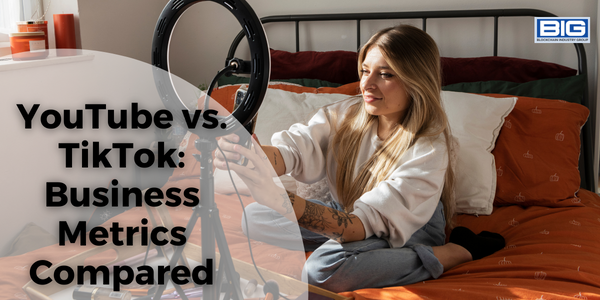
The world of social media and online video platforms is constantly evolving, and businesses and marketers must keep up with the latest trends and developments in order to stay ahead of the curve. Today, two of the most popular and influential platforms are YouTube and TikTok. Both offer unique features and opportunities for marketers, but which one is the best choice for your brand? To help answer this question, let’s take a closer look at the key metrics and statistics that matter most from a marketing and business perspective.
Users and Reach
One of the most important metrics for any social media platform is the size of its user base. This can provide a valuable indication of the potential reach and exposure that your brand could achieve. With over 2 billion monthly active users, YouTube is the largest video platform in the world, and offers a truly massive audience for marketers to tap into. TikTok, on the other hand, is a relatively new player in the space, but has rapidly grown to over 1 billion active users worldwide. Although TikTok’s reach is smaller than YouTube’s, it has become particularly popular among young people and Gen Z, making it an ideal platform for brands targeting this demographic.
Engagement and Interaction
Another key factor to consider when choosing between YouTube and TikTok is engagement and interaction. Engagement refers to the level of interaction that users have with content on the platform, such as likes, comments, shares, and views. Interaction is a critical factor for marketers, as it can drive brand awareness, build loyalty, and increase conversions. In terms of engagement, TikTok is the clear winner, with users spending an average of 52 minutes per day on the app and generating millions of likes, comments, and shares. YouTube, on the other hand, has a much lower level of engagement, with users spending around 40 minutes per day on the site. However, YouTube’s massive user base and powerful algorithms still make it a valuable platform for marketers who are looking to build a loyal following and reach new audiences.
Advertising and Monetization
Both YouTube and TikTok offer monetization opportunities for content creators, but the specifics of how they do so can differ significantly. YouTube’s advertising system is highly sophisticated, and allows brands to target specific demographics, interests, and behaviors. Advertisers can choose from a variety of ad formats, including in-stream ads, display ads, and bumper ads, and can use detailed analytics to track the success of their campaigns. TikTok’s advertising system is still in its infancy, but the platform has been experimenting with a range of ad formats, including in-feed and branded content. TikTok’s advertising system is also highly engaging, with users often participating in challenges, filters, and interactive ads.
How YouTubers Monetize Their Video
Important LinkedIn Demographics
Instagram Reels: Short-Form Video Content
Business Potential
Finally, it’s important to consider the potential for business growth and success when choosing between YouTube and TikTok. Although YouTube has been around for much longer than TikTok and has a more established business model, TikTok has the potential to be a game-changer in the digital marketing space. With its massive user base, highly engaged audience, and innovative ad formats, TikTok has the potential to generate significant returns for brands and businesses. YouTube, on the other hand, is a proven platform that offers robust monetization opportunities and a powerful advertising system, making it a safe and reliable choice for businesses looking to grow their brand and reach new audiences.
Conclusion
Both YouTube and TikTok are powerful and dynamic platforms that offer unique opportunities for businesses and marketers. Whether you’re looking for a massive audience, high levels of engagement, innovative ad formats, or proven business potential, both platforms have something to offer. Ultimately, the choice between YouTube and TikTok will come down to a number of factors, including your target audience, marketing goals, and resources.



